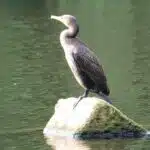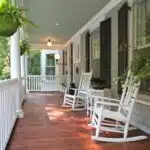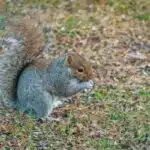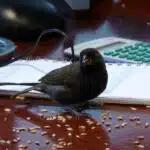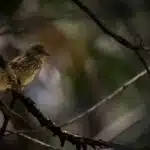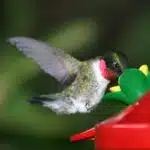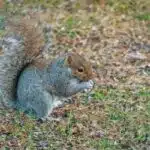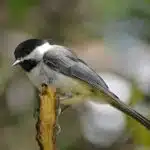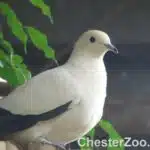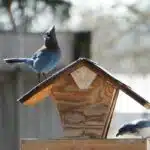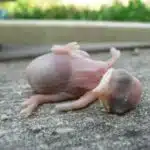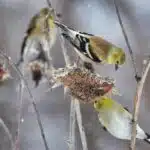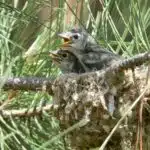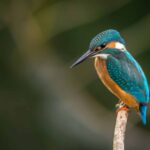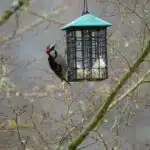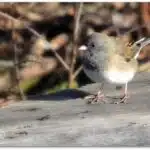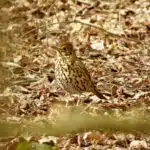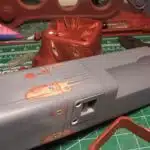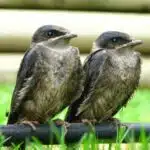Building a birdhouse is an enjoyable and rewarding activity for those who have a passion for nature and wildlife. Not only does it provide shelter for birds, but it also enhances the beauty of your garden or backyard. However, building a birdhouse requires attention to detail, precision, and patience. In this article, we will guide you through the process of building a birdhouse step-by-step so that you can create a safe and welcoming habitat for our feathered friends.
Before starting your project, it is important to understand the needs of different bird species in terms of the size and shape of the house, location, and materials used. By following our instructions carefully and choosing appropriate materials such as untreated wood or PVC pipes, you can ensure that your birdhouse meets these requirements and provides a secure home for birds to raise their young. Our aim is not only to provide you with practical guidance on how to build a successful birdhouse but also to encourage you to take an active role in protecting our environment by supporting biodiversity in your local area.
The Importance Of Building A Birdhouse
The construction of birdhouses is an essential aspect of conservation efforts and has a wide range of benefits. Building a birdhouse provides shelter for birds and encourages them to nest within the safety of the structure. This, in turn, helps to increase the population of birds and promote biodiversity. Moreover, birdhouses are an excellent tool for observing and studying bird behavior, making them indispensable for ornithologists.
As a birdhouse building expert, it is essential to understand the importance of constructing a well-built structure that caters to the needs of different bird species. A poorly constructed birdhouse can be hazardous to birds or fail to attract them altogether. Therefore, it is crucial to create designs that meet specific requirements such as size, design elements, and materials used.
Conservation efforts require practical solutions that protect wildlife habitats and promote their survival. Building a birdhouse is one way in which individuals can contribute towards these efforts. By providing safe nesting sites for birds, we can help conserve their populations while also enjoying the beauty they bring to our surroundings. To achieve this goal effectively, we must first understand the needs of different bird species and how best to cater to them.
Understanding The Needs Of Different Bird Species
As a birdhouse building expert, it is important to understand the behavior of different bird species. This knowledge will help you build a birdhouse that meets their specific needs and increases their chances of nesting in your backyard. For instance, some birds prefer open-fronted houses while others prefer enclosed ones. Understanding these preferences will ensure that your birdhouse attracts the right birds.
When building a birdhouse, it is also crucial to consider its placement. The location should be based on the behavior of the birds you want to attract. Some birds, such as bluebirds, prefer to nest in areas with open fields and scattered trees while others, such as chickadees, prefer wooded areas with dense vegetation. A good rule of thumb is to place the birdhouse at a height that matches the height of nearby vegetation.
To further increase your chances of attracting birds, consider incorporating these placement strategies into your landscaping:
- Place multiple birdhouses around your yard at varying heights.
- Provide food sources such as flowers or feeders near the birdhouses.
- Create a water source like a birdbath or small pond nearby.
- Allow natural habitat growth by avoiding excessive pruning and pesticide use.
By understanding bird behavior and implementing effective placement strategies, you can create an inviting environment for different species to nest in your backyard.
As we move forward in this guide on how to build a birdhouse, our next section will focus on choosing the right location for your birdhouse without disturbing existing habitats or ecosystems.
Choosing The Right Location For Your Birdhouse
As a birdhouse building expert, choosing the right location for your birdhouse is crucial to attracting the right birds and ensuring their safety. Before you begin building, there are two important landscaping considerations to keep in mind: the first is to choose a location that provides enough space for the birdhouse and ensures that it will not be disturbed by animals or people. The second consideration is to select a spot that provides adequate cover and shade for the birds.
Once you have found the perfect location for your birdhouse, it’s time to think about protecting it from predators. This can be achieved by placing the birdhouse at least five feet off the ground, away from any nearby trees or bushes where predators may lurk. Additionally, make sure to install predator guards on your birdhouse entrance holes to prevent snakes, squirrels, and other pesky critters from getting inside.
In summary, when selecting a location for your birdhouse, consider both landscaping requirements and protective measures. By doing so, you will create an inviting habitat that is safe and secure for your feathered friends. Next up, we’ll discuss how selecting the best materials can ensure your birdhouse stands up against weather conditions and lasts for years to come.
Selecting The Best Materials For Your Birdhouse
After deciding on the perfect location for your birdhouse, it’s time to think about the materials you will use. There are a variety of options available, but the two most common materials used are wood and PVC. While both have their advantages and disadvantages, ultimately it comes down to personal preference.
Wooden birdhouses have a more traditional look and feel, which is why many people prefer them. They are also easy to work with and can be customized in a variety of ways. However, they require regular maintenance to keep them looking their best and to prevent rotting or decay. On the other hand, PVC birdhouses are durable and low-maintenance. They don’t require painting or sealing like wooden birdhouses do, but they also lack the natural aesthetic that many people desire.
Another consideration when building your birdhouse is whether or not to paint it. Some people prefer a natural look for their birdhouse, allowing the beauty of the wood or PVC to shine through. Others may choose to paint their birdhouse in a bright color or with decorative designs. If you decide to paint your birdhouse, make sure you use non-toxic paint that won’t harm the birds.
When selecting materials for your birdhouse, consider both practicality and aesthetics. Ultimately, what matters most is creating an inviting space that will attract birds to your yard while providing them with a safe place to call home. In the next section, we’ll discuss some essential tools you’ll need if you want to build your own birdhouse from scratch.
Tools You Will Need To Build A Birdhouse
As you embark on this exciting journey of building a birdhouse, it is important to ensure that you have the right tools. Tool organization is key to making sure that you do not waste time searching for what you need. A toolbox with dividers or a pegboard with hooks can help keep your tools neatly organized.
Before you begin, it is important to take safety precautions. Wear protective gear such as gloves and goggles to protect yourself from injuries. Use power tools with caution and always read the manufacturer’s instructions before use.
Using traditional materials such as wood is great for building a birdhouse, but alternative materials such as PVC pipes or recycled plastic can also be used. These materials are durable, lightweight, and easy to work with. They are also eco-friendly, making them a great choice for environmentally conscious builders.
Now that you have your tools in order and have taken the necessary safety precautions, it’s time to move on to measuring and cutting your wood or PVC without skipping any crucial steps in the process.
Measuring And Cutting Your Wood Or Pvc
Accurate measurements are crucial when building a birdhouse. Before you start cutting your wood or PVC, it is essential to take precise measurements of all the pieces required. Measuring techniques can vary depending on the material you are using and the design of your birdhouse.
For wood, a tape measure is the most common tool for taking measurements. Start by measuring the length and width of each piece needed for your design. If you are using PVC, a pipe cutter or saw can be used to cut the material into the required lengths. Always remember to measure twice and cut once to avoid wasting material.
When it comes to cutting tools, there are several options available. A handsaw can be used for simple cuts, while a miter saw or table saw is more suitable for precision cuts and angled cuts. A jigsaw can be used for curved cuts or intricate designs. Always ensure that your cutting tools are sharp and in good condition before starting any cuts.
Assembling the walls of your birdhouse requires accurate measurements and precise cuts. Once you have all your pieces measured and cut according to your design, it’s time to start putting them together. In the next section, we will discuss how to assemble the walls of your birdhouse seamlessly without compromising its stability and durability.
Assembling The Walls Of Your Birdhouse
Now that you have all the pieces of your birdhouse ready, it’s time to assemble them into walls. Start by applying wood glue to the edges of the front and back panels before attaching them to the sides. Use clamps or weights to hold them together while they dry. Once dry, attach the bottom panel using screws or nails. Make sure that everything is square and flush before moving on.
Next, drill a hole for the entrance approximately 6 inches above the bottom panel on one of the side panels. The size of the hole will vary depending on what type of bird you want to attract. Refer to a birdhouse size chart for specific measurements. After drilling, sand around the hole until it’s smooth and free from splinters.
To create a unique look for your birdhouse, consider using alternative materials such as recycled metal or plastic instead of wood. These options can add a modern touch to your backyard while still providing a cozy home for birds. Additionally, painting your birdhouse is another way to personalize it further and make it stand out in your garden.
- Use natural colors such as green, brown, or gray to blend in with nature.
- Try bright colors like blue or yellow if you want your birdhouse to be more eye-catching.
- Add decorative elements like flowers or vines painted around the entrance hole.
- Experiment with patterns or stencils for added flair.
Assembling the walls of your birdhouse is just one step towards creating a perfect home for birds in your backyard. In our next section, we’ll go over how to create a sturdy roof that can withstand any weather conditions and keep birds safe from harm. Let’s get started!
Creating The Roof Of Your Birdhouse
As a birdhouse building expert, it is important to note that the roof design can greatly impact the overall functionality and durability of the birdhouse. A well-designed roof should provide ample protection from harsh weather conditions such as rain or snow, while also allowing proper ventilation for the birds inside. One popular design choice is a slanted roof, which not only aids in water runoff but also creates additional space for the birds to perch.
When selecting materials for your birdhouse roof, it is crucial to prioritize weather resistance. Materials such as cedar or cypress are excellent options due to their natural ability to repel insects and withstand rotting caused by moisture. Additionally, using metal flashing along the edges of the roof can help prevent water damage and prolong the lifespan of your birdhouse.
Overall, taking careful consideration when designing and constructing your birdhouse’s roof will ensure its longevity and effectiveness in providing a safe and comfortable home for our avian friends. In the next section, we will discuss how adding a perch and entrance hole can further enhance the functionality of your birdhouse without compromising its structural integrity.
Adding A Perch And Entrance Hole
A perch is a useful addition to any birdhouse, as it allows birds to rest before entering or exiting the house. When adding a perch, make sure to choose a sturdy material that can support the weight of the bird. A wooden dowel or branch that is at least 6 inches long and 1/2 inch in diameter is recommended. Drill two holes, one on each side of the birdhouse about 1-2 inches below the entrance hole, insert the perch through both holes, and secure it with wood glue.
Choosing an entrance size is crucial for attracting specific types of birds. Smaller entrances are suitable for wrens and chickadees while larger entrances are preferable for bluebirds and woodpeckers. As a general rule, aim for an entrance hole with a diameter between 1-1/8 inches to 1-1/2 inches. Before cutting the entrance hole, research what species of birds are common in your area and their preferred sizes.
Now that you have added a perch and chosen an appropriate entrance size, your birdhouse is almost complete. The next step will be installing your birdhouse onto a pole or tree using screws or brackets securely. Ensure that your birdhouse has clear access for birds to enter and leave safely from its location. By following these steps, you can create an inviting home for feathered friends while also enjoying their presence in your backyard sanctuary.
Installing Your Birdhouse
After adding a perch and entrance hole to your birdhouse, the next step is to install it in a suitable location. Before doing so, make sure to secure brackets or screws onto the back of the birdhouse. This will ensure that the birdhouse is securely fastened and won’t fall off with strong winds or heavy rain. It is important to place the birdhouse at least 5-6 feet above ground level and in an area that receives enough sunlight.
Once you have installed your birdhouse, you can paint and decorate it according to your preferences. Use non-toxic paint that won’t harm birds if they peck at it. You can also add some natural elements such as moss, twigs or leaves around the entrance hole to make it more inviting for birds. However, avoid using any materials that could be harmful or toxic for birds.
Securing brackets, painting and decorating are essential steps in building a birdhouse. However, maintaining your birdhouse is equally important to ensure its longevity and functionality. In the next section, we will discuss some tips on how to maintain your birdhouse and keep it clean for our feathered friends who choose to call it home.
Maintaining Your Birdhouse
Maintaining Your Birdhouse After building a birdhouse, it is essential to maintain it properly. Cleaning the birdhouse regularly is crucial for the health and safety of the birds that will be residing in it. A clean birdhouse helps prevent the spread of diseases and parasites that can harm birds. Therefore, it is recommended to clean your birdhouse at least twice a year.
Cleaning tips for your birdhouse include removing any old nesting materials and wiping down the inside with a mild soap solution or white vinegar. It is also important to rinse well with water and allow the birdhouse to dry completely before placing it back outside. Additionally, inspecting the birdhouse for damage or wear and tear should be done during cleaning time. Repair any damages immediately to ensure birds’ safety.
Predator prevention is another crucial aspect of maintaining your birdhouse. Keep an eye out for potential predators such as cats, raccoons, squirrels, and snakes in your area. To protect your feathered friends, secure the birdhouse on a pole or post at least six feet from the ground and away from trees or buildings that may provide access points for predators. Consider adding predator guards such as baffles or cones around the pole or post to prevent animals from climbing up to reach the birdhouses.
As you can see, maintaining a birdhouse involves more than just building it; proper upkeep ensures that birds are safe and healthy while residing in their new home. By following these cleaning tips and predator prevention techniques, you can help increase your chances of attracting more birds to your backyard sanctuary while providing them with a safe place to call home. Next up are some tips on how you can attract various species of birds to make their homes in your newly built structure!
Tips For Attracting Birds To Your Birdhouse
Maintaining Your Birdhouse is crucial to ensure that birds continue to use it as a safe haven. However, attracting birds to your birdhouse requires more than just maintenance. Providing food and water sources is an excellent way to invite them into your backyard. You can place a bird feeder near the birdhouse or install a birdbath nearby. These features will attract different bird species, and you’ll have the chance to observe them up close.
Aside from food and water, natural landscaping is also essential in attracting birds to your backyard. A well-manicured lawn may look picturesque, but it doesn’t provide much for birds. Consider adding native plants that attract insects, which serve as an additional food source for birds. Moreover, plant trees that provide shelter or nesting sites for birds.
Attracting birds isn’t rocket science, but it does require effort and knowledge of what appeals to them. By providing food and water sources and natural landscaping, you’ll create an environment that’s attractive and welcoming to different bird species. In the subsequent section, we’ll discuss common birdhouse design mistakes to avoid so you can increase your chances of having many feathered visitors in your backyard.
Common Birdhouse Design Mistakes To Avoid
Avoiding design mistakes is essential when building a birdhouse that will provide a safe and attractive home for our feathered friends. Here are some common errors to avoid when building a birdhouse. Firstly, it is important to select the right size of birdhouse that is suitable for the specific bird species you want to attract. Secondly, make sure that the entrance hole is of the correct size and shape for the birds you are hoping will nest in your birdhouse. Finally, ensure that your birdhouse has proper ventilation to allow air circulation.
Tips for improving design include adding perches or platforms near the entrance hole of the birdhouse. This will enable birds to perch on these structures before entering or exiting their homes, making their movement in and out of their house much easier and safer. Additionally, painting or staining your birdhouse with natural colors can make it more attractive to birds while also blending in with its natural surroundings.
To make your birdhouse more attractive to birds, consider adding nesting materials like grass clippings, small twigs, or feathers around the outside of the opening. This will encourage birds to explore their new home and may entice them to build nests inside. Remember that different bird species have varying preferences when it comes to nesting materials, so do some research before selecting which materials to use.
Transitioning into decorating your birdhouse without using ‘step,’ consider how adding decorations can improve both its appearance and functionality for birds. In addition to visual appeal, decorations like moss or ivy can help insulate the interior of the house from extreme temperatures while also providing camouflage from predators.
Decorating Your Birdhouse
To add a touch of elegance to your birdhouse, it’s time to start decorating. Birdhouse painting is one way to make your birdhouse stand out and blend in with the surrounding environment. A fresh coat of paint can give your birdhouse a unique personality that reflects your style as well as the character of the birds who will call it home.
DIY birdhouse accessories are another great way to personalize your birdhouse and make it more functional for the birds. Adding perches, nesting material, or food and water dispensers can enhance the comfort and convenience of your feathered guests. These DIY accessories can be crafted from various materials such as twigs, feathers, moss, and even recycled items like plastic bottles.
In addition to enhancing the physical appearance and functionality of your birdhouse, decorating can also provide you with an opportunity to express creativity while serving others. By taking pride in constructing a visually appealing and comfortable home for birds, you’re also helping to support local ecosystems by providing shelter and promoting biodiversity. So let’s get creative with our DIY skills and enjoy creating a welcoming habitat for our new feathered friends!
Enjoying Your New Feathered Guests
Now that you have successfully built your birdhouse, it’s time to enjoy the fruits of your labor. Watching birds and observing their behaviors can be a very rewarding experience. Here are some tips on how to make the most out of your new feathered guests.
One way to decorate your birdhouse is by adding a splash of color. This can be done by painting the exterior of your birdhouse with non-toxic paint. Make sure that the colors you use blend well with the surroundings. Another way to add a personal touch is by hanging decorations around your birdhouse. Just make sure that they do not obstruct the entrance or exit of the birds.
Birdwatching can be an enjoyable pastime, but it requires patience and practice. To start, observe from a distance so as not to disturb the birds. Use binoculars or a camera with a zoom lens for a closer look. Note their behavior, such as feeding habits and vocalizations, which can help identify different species. It’s also important to keep a record of what you see for future reference.
Incorporating these decorating and birdwatching tips will surely enhance your experience with your new feathered friends. Remember to always act responsibly when interacting with nature and respect the birds’ habitat. By building a birdhouse and enjoying their presence, you are contributing to their conservation efforts in ensuring their survival in our environment without disrupting their natural way of life.
Conclusion
Building a birdhouse is an exciting and rewarding project that can bring joy to both you and the feathered friends who will call it home. By understanding the needs of different bird species, choosing the right location and materials, and avoiding common design mistakes, you can create a safe and comfortable habitat for your avian guests.
Begin by researching the specific requirements of the birds you hope to attract. Different species have unique preferences for nesting materials, entrance sizes, and even placement height. Once you have chosen your target residents, select a suitable location for your birdhouse that provides protection from predators and harsh weather conditions.
When it comes to building materials, wood is ideal due to its insulating properties. Cedar or pine are great options that will last for many years with proper maintenance. You will need basic tools like a saw, drill, sandpaper, and screws or nails to construct your birdhouse. Remember to avoid using paints or chemicals that could harm your feathered friends.
To attract birds to your new birdhouse, consider adding supplemental food sources like feeders or water features nearby. Avoid hanging too many houses in close proximity as this can lead to overcrowding and territorial disputes among birds.
One common mistake in birdhouse design is creating entrances that are too large or small for the intended species. Another is failing to provide adequate ventilation or drainage within the house itself. Take care to research best practices before constructing your own birdhouse.
Finally, decorating your birdhouse can be a fun way to add personality while still maintaining functionality. Consider adding colorful accents or painting designs on the exterior while avoiding anything too flashy or distracting for potential occupants.
In conclusion, building a birdhouse is an enjoyable project with numerous benefits for both humans and birds alike! By following these guidelines as a seasoned expert would suggest, you can create a safe and inviting space for avian visitors in your backyard while also enjoying their beauty from afar. After all, what could be better than hearing the sweet melodies of songbirds outside your window or watching baby birds take their first flight from your very own birdhouse!
Image Credits
- “Birdhouse” by bobosh_t (featured)




